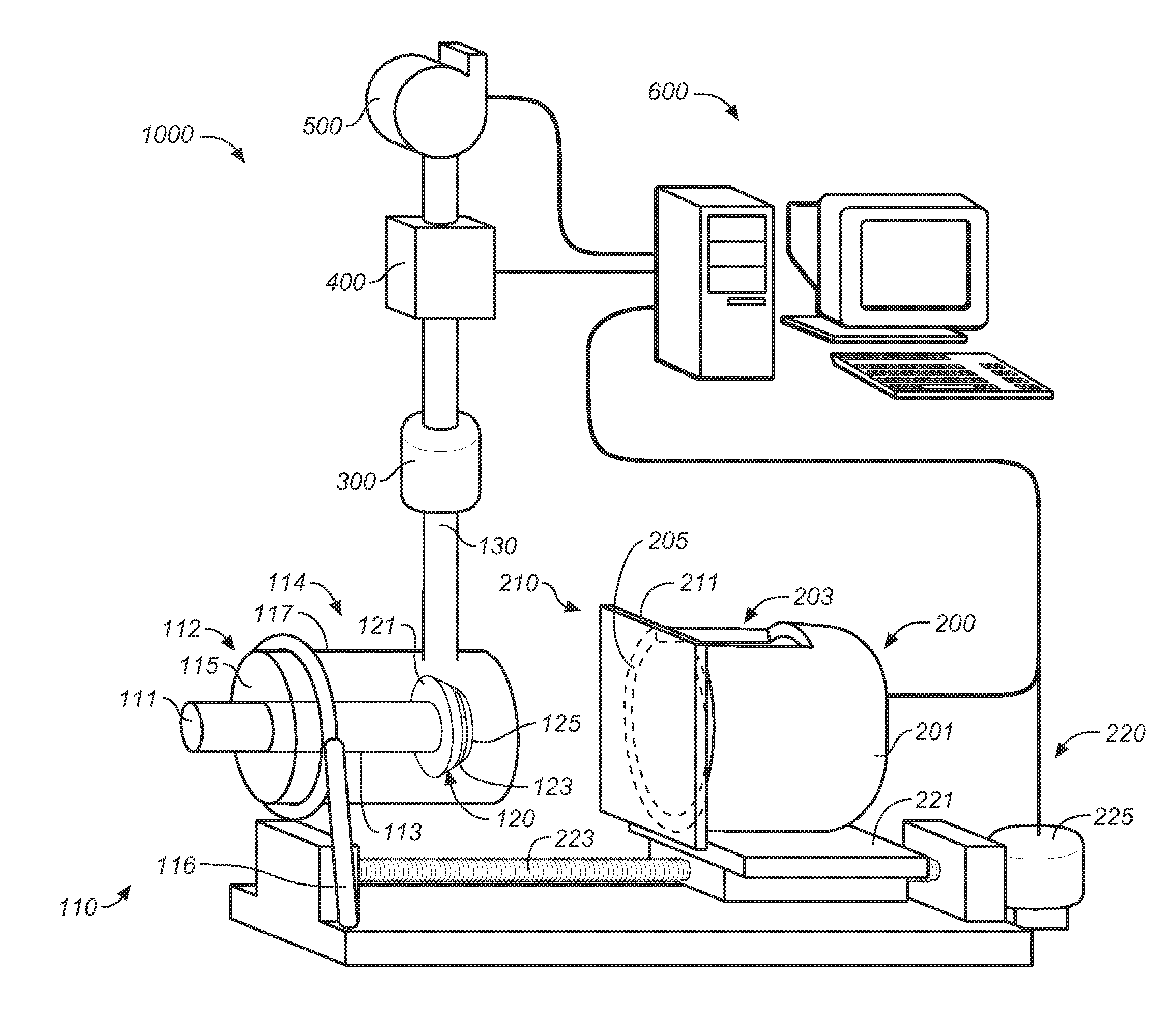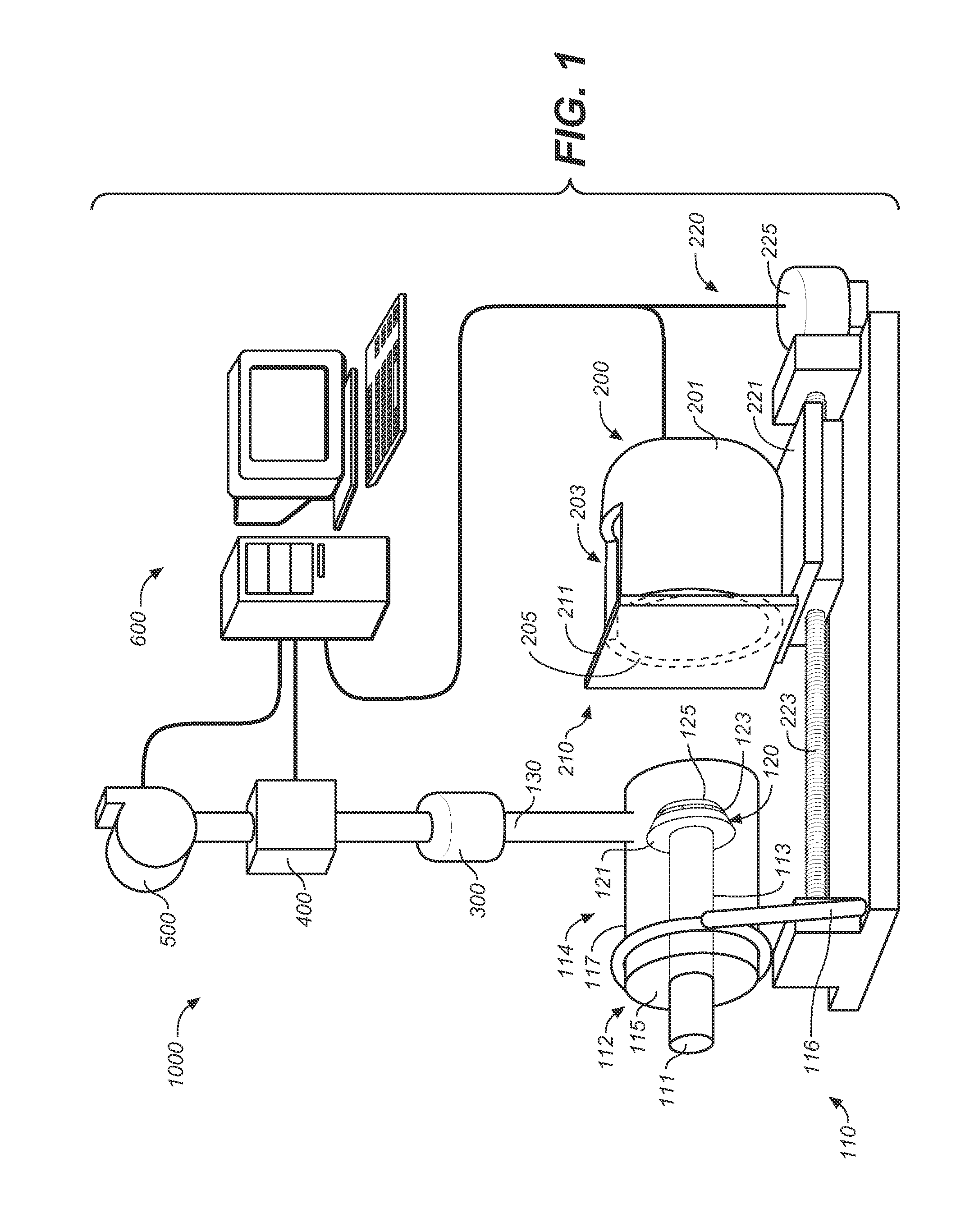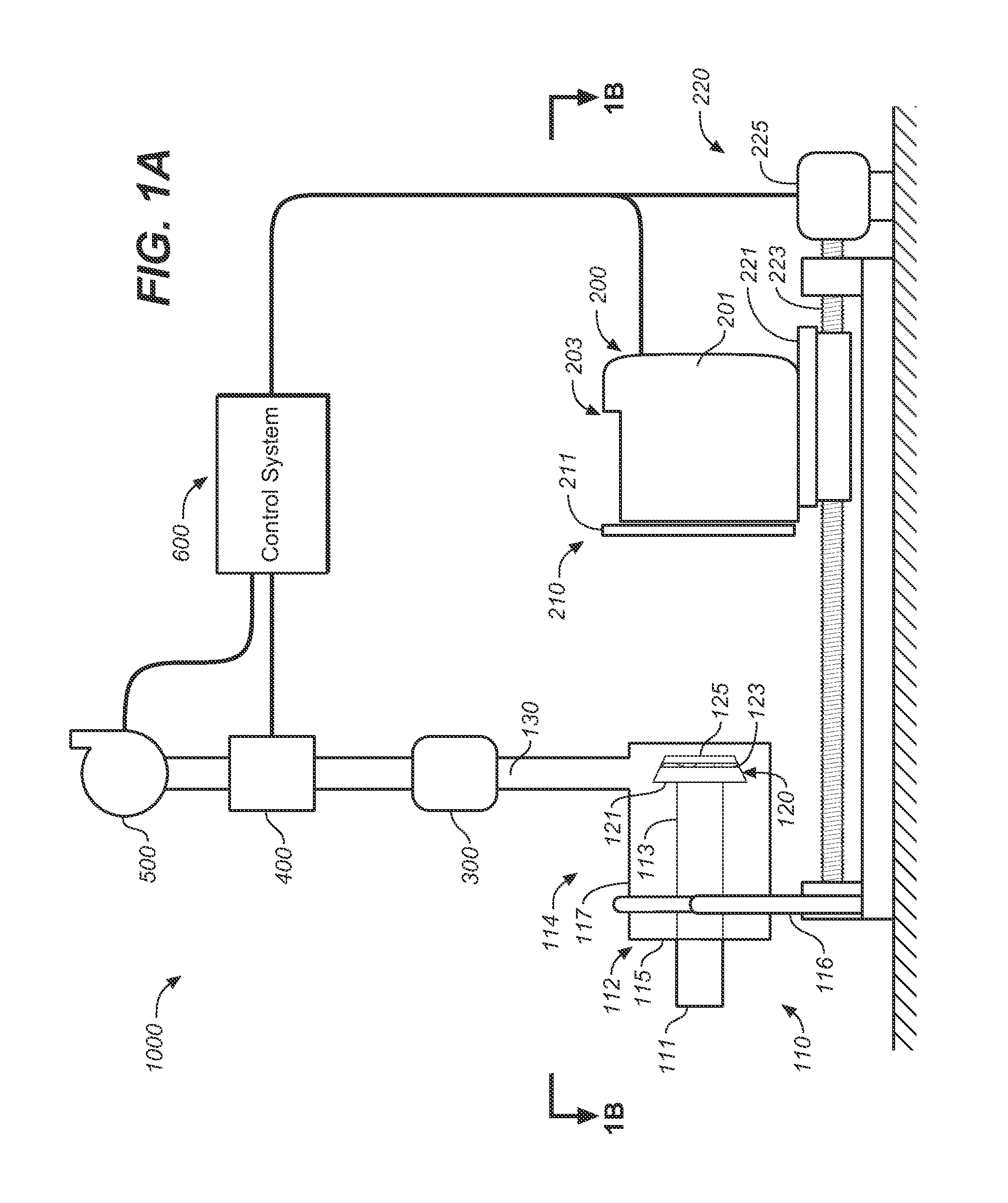Method and analyzer for determining the content of carbon-containing particles filtered from an air stream
a carbon-containing particle and analysis method technology, applied in the field of sampling particles in air streams, can solve the problems of considerable debate, inability to individually identify the myriad of carbonaceous compounds, adverse human health effects, etc., and achieve the effect of rapid analysis of the total carbonaceous conten
- Summary
- Abstract
- Description
- Claims
- Application Information
AI Technical Summary
Benefits of technology
Problems solved by technology
Method used
Image
Examples
example
[0091]FIG. 5 presents data obtained to illustrate the output from a carbon dioxide detector 400 of a prototype particle analysis system 1000. It was determined independently that filter 123 included 75 micrograms of carbon particulates. FIG. 5 shows a measured CO2 concentration, C(t), for a filter that was heated and where combustion of the particulates occurred in the presence of air over approximately 5 minutes, from a time t1 to a time t2. The dashed line shows the calculated baseline that increased from 630 ppm at time t1 to 700 ppm at time t2.
[0092]The increase in CO2 concentration over ambient baseline is evident. The amount of CO2 in excess over that baseline was integrated according the equation discussed above, to give a calculated carbon content of about 64 micrograms. This is approximately 85% of the independently measured amount of 75 micrograms. The prototype apparatus did not have a catalyst to provide complete conversion to CO2, and also heated the sample very slowly,...
PUM
 Login to View More
Login to View More Abstract
Description
Claims
Application Information
 Login to View More
Login to View More - R&D
- Intellectual Property
- Life Sciences
- Materials
- Tech Scout
- Unparalleled Data Quality
- Higher Quality Content
- 60% Fewer Hallucinations
Browse by: Latest US Patents, China's latest patents, Technical Efficacy Thesaurus, Application Domain, Technology Topic, Popular Technical Reports.
© 2025 PatSnap. All rights reserved.Legal|Privacy policy|Modern Slavery Act Transparency Statement|Sitemap|About US| Contact US: help@patsnap.com



